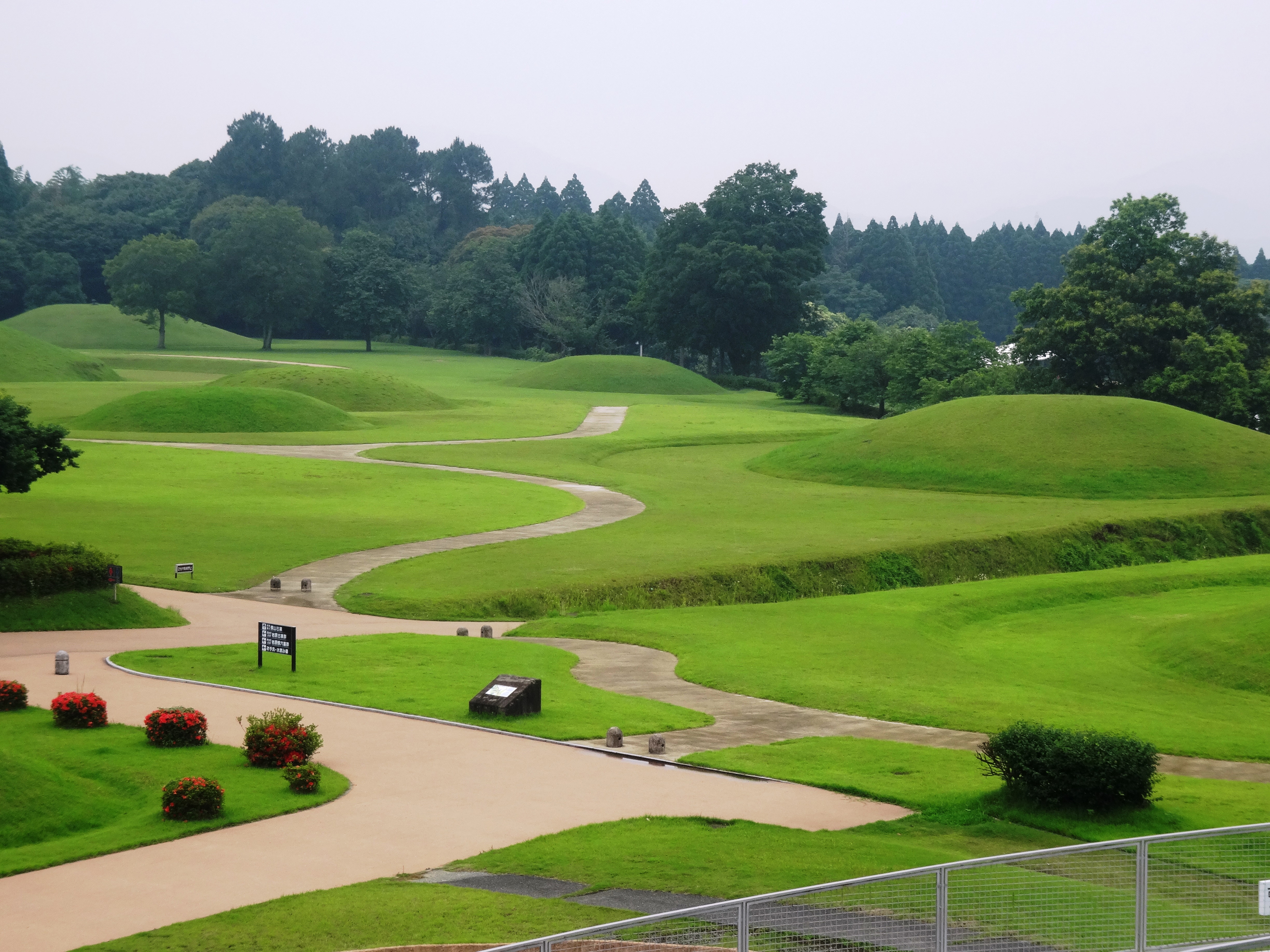Despite my short stature, I have to bend nearly in half to enter the underground chamber of reconstructed fifth-century tomb in the Kumamoto Prefecture Decorative Tumulus Museum. The entire tomb is modeled after an actual mound in the nearby city of Yamaga, and inside the chamber, a replica stone altar sits under a rocky dome, bold geometric designs gracing its underbelly. Just above the decorations are a triangular black mouth and a pair of what seem to be scarlet eyes, as if to stare down intruders. To the right, a simplified human figure with arms raised stands against a blood-red background. Life in southern Japan during the third to sixth centuries — with violence and disease as a quotidian struggle — may not have been pretty but, if the walls of the chamber are anything to go by, death certainly was.
Large tumuli, known as kofun in Japanese, were once such a ubiquitous part of the landscape that an entire historical era was named after them: the Kofun Period (250-552). The introduction of rice farming during this era and the establishment of permanent settlements in the preceding Yayoi Period (200 B.C. to A.D. 250) had given way to regional power bases, which were governed by members of an emergent ruling class. When they died, their bodies were laid to rest in stone chambers dug deep into natural hills or — toward the end of the period — in subterranean rooms that soil was heaped upon to create a manmade prominence. The possessions these leaders took with them to the afterlife, and the decorated tombs themselves, are one of the best insights we have into early Japanese culture. And there's nowhere better to get a look at these resting places than in Yamaga, Kumamoto Prefecture.
Despite the seismic activity in Kumamoto Prefecture in April, which damaged a number of Kyushu's cultural and historical sites, the Yamaga kofun seem to be untouched. A short drive to the south, Kumamoto and many of the surrounding municipalities are still recovering from the earthquakes that claimed at least 49 lives and caused widespread destruction. In a region that historically sees little seismic activity, the violent upheaval and continuing aftershocks have left many on edge. Communities are struggling to pick up the pieces.



















With your current subscription plan you can comment on stories. However, before writing your first comment, please create a display name in the Profile section of your subscriber account page.